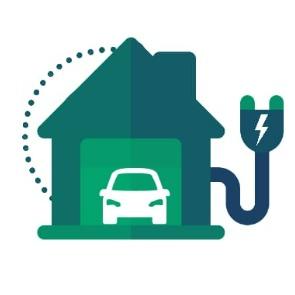Charge IT
Optimizing Charging Infrastructure and Enhancing the EV Experience
Created on 17th March 2024
•
Charge IT
Optimizing Charging Infrastructure and Enhancing the EV Experience
The problem Charge IT solves
Charge IT revolutionizes the landscape of electric vehicle (EV) ownership by offering a comprehensive solution that addresses key challenges and enhances the overall experience. At its core, Charge IT focuses on optimizing charging infrastructure, mitigating range anxiety, and improving safety and convenience. Traditional charging networks often suffer from inefficiencies and long wait times, frustrating EV owners. Charge IT tackles this issue head-on with its user-friendly platform, providing real-time information and reservation options for charging stations. This streamlined approach minimizes wait times and maximizes convenience, making charging sessions hassle-free. Additionally, Charge IT alleviates range anxiety by offering advanced features like predictive range estimation and comprehensive station availability data, empowering users to plan their journeys confidently. By integrating renewable energy sources and prioritizing safety and convenience, Charge IT promotes sustainable transportation solutions and contributes to a cleaner, greener future. With its innovative platform and commitment to sustainability, Charge IT is leading the way towards a more accessible, convenient, and environmentally-friendly EV ownership experience.
Challenges we ran into
During the development of our project, we encountered several challenges that demanded creative solutions and diligent problem-solving., such as:
One challenge involved ensuring the proper implementation of booking slot use cases within our application, enforcing constraints like allowing only one vehicle registration per day and preventing multiple bookings for the same location simultaneously. To address this, we adopted a systematic approach, creating comprehensive test cases and employing automated testing frameworks to validate our application's functionality. Additionally, we implemented robust validation checks within the application code to enforce desired behaviours, ensuring users adhered to booking constraints.
Another obstacle we faced was designing a responsive user interface (UI) adaptable to different screen sizes and aspect ratios. Leveraging modern front-end development frameworks like React.js along with Tailwind CSS media queries, we created responsive UI components that adjusted dynamically to varying screen dimensions. Continuous testing across devices ensured a consistent and optimal user experience.
Working with a real-time database and implementing asynchronous logic posed additional challenges. We utilized cloud-based database solutions like Firebase Realtime Database and asynchronous programming techniques to manage data flow efficiently. Thorough testing and error-handling mechanisms were essential to maintain data integrity and reliability.
Integrating hardware components, such as Arduino-based devices, and external APIs like Google Maps API presented unique challenges. Establishing a communication protocol between the hardware and software, along with rigorous testing and prototyping, ensured compatibility and reliability across different environments.
In conclusion, through systematic problem-solving and leveraging modern technologies, we successfully navigated these challenges, delivering a robust and user-friendly solution.
Tracks Applied (2)
Environmental Sustainability
Built for Bharat
Technologies used
